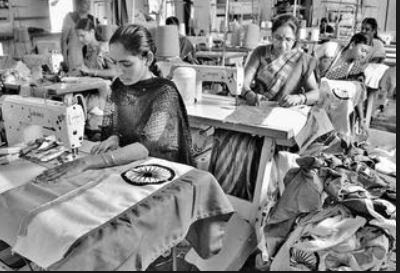1. National flag was hoisted
first on August 7, 1906 at the Parsee Bagan Square in Calcutta. The flag was
composed of horizontal strips of red, yellow and green. The red strip at the
top had eight white lotuses embossed on it in a row. The green strip had a
white sun on the left and a white crescent and star on the right.
3. The current flag has three
colours in it. The top strip saffron stands for courage and sacrifice; the middle
portion white for peace, truth, purity and green for faith, fertility and
chivalry. The Ashok Chakra at the centre of the flag — righteousness.
India never invaded any
country in her last 100000 years of history.
5. It is said that the first
version of the current national flag was made by Pingali Venkayya at Bezwada in
1921. It was made up of two colours-red and green-representing the two major
communities. Gandhiji suggested the addition of a white strip to represent the
remaining communities of India and the spinning wheel to symbolize progress of
the Nation.
6. North Korea, South Korea, Bahrain
and Republic of the Congo share their independence day with India. Mountbatten
chose the day since Aug 15 as it also commemorated the second anniversary of
Japan's surrender to the Allied Forces. North Korea, South Korea, Bahrain and
Republic of the Congo share their independence day with India.
7. Khadi Development and
Village Industries Commission is the only licenced flag production and supply
unit in India. As of 2008, the Karnataka Khadi Gramodyoga Samyukta Sangha based
in Dharwad was the sole manufacturer of the flag. Earlier, flags were made with
Jayadhar, a popular variety of cotton grown in Karnataka. But recently, Khadi
Gramodyoga has started using Bt cotton instead of the indigenous
8. India is the world's
largest producer of tea, milk and mangoes and also the second largest producer
of wheat and rice, the world's major food staples.
9. "Chess" and "Snakes
and Ladders" were invented in India.
10. India's first Prime
Minister Jawaharlal Lal was featured in Vogue magazine. His unique dressing
style, single-breasted jacket, became an important fashion trend in the West. Nehru
jacket was listed on Time list of 'global fashion statement.' Later, Nehru
jacket was popularized by the Beatles and worn by such famous people as Johnny
Carson and Sammy Davis Jr.
11. India never invaded any
country in her last 100000 years of history
12. On August 15, 1947, when
India became free from the foreign rule, Mahatma Gandhi was in Calcutta. Gandhiji
spent his day in prayers, fasting and spinning protesting the madness of
communal hatred.
13. The world's largest road
network is in India-over 1.9 million miles of roads cover the country.
14. Cherrapunji (Meghalaya) is
the wettest spot on earth. It receives at least 425 inches of rain every year, which
is over 5 times more than the tropical rain forests of South America!
15. With around 155,618 post
offices and over 566,000 employees, India has the largest postal network in the
world.
16. Hindi is not India's
national language as many think or believe; it's the official language. Article
343 of the Constitution states that Hindi in Devnagari script is the official
language of India. But Hindi is the first official language of India and Hindi
was declared the Official Language of the Union on September 14, 1949.
17. India Railways is the
single largest civilian employer in the world, with over a million employees.
18. When India became
independent on August 15, 1947 there was no National Anthem. Even though the
Bengali invocation of Jana Gana Mana was written in 1911, it was not considered
as national anthem till 1950.
19. State Bank of India has
the maximum number of branches in the world, with the number being over 15,000
and counting.
20. Controversy surrounding
Jana Gana Mana claims that Rabindranath Tagore wrote the song ‘Jana Gana Mana' for
the British monarch. He later refuted this claim and said that he wrote the
song as requested by his friend and the song pronounced the victory in ‘Jana
Gana Mana' of that Bhagya Vidhata of India and not of King George V.
21. The value of "pi" was first
calculated by the Indian Mathematician Budhayana, who also explained the
Pythagorean Theorem.
22. India is one of only three
countries that makes supercomputers (the US and Japan are the other two).
23. Navi Mumbai, a planned
satellite township of Mumbai, was developed in 1972 and is the largest planned
township on the planet.
24. India produces more movies
than any other country in the world and Bollywood is the largest film industry
in the world.
25. There are 300,000 active
mosques in India, more than in any other country, including the Muslim world
Source : indiantvnews.com























